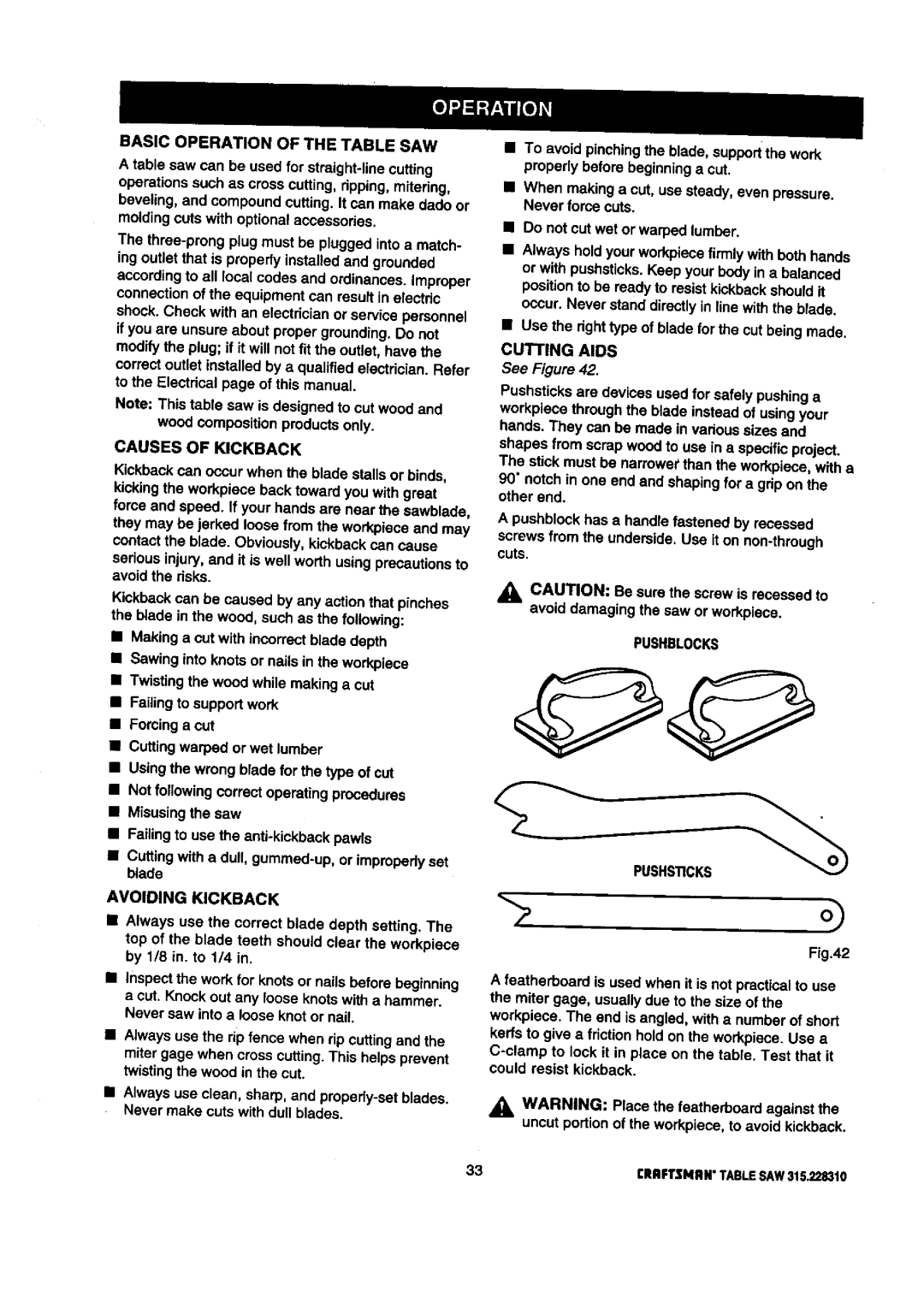
BASIC OPERATION OF THE TABLE SAW
A table saw can be used for
The
Note: This table sew is designed to cut wood and wood compositionproductsonly.
CAUSES OF KICKBACK
Kickbackcan occurwhen the blade stalls or binds, kickingthe workpiece back toward you with great force end speed, if your hands are near the sewblade, they may be jerked loose from the workpiece and may contactthe blade. Obviously, kickbackcan cause
serious injury, and it is well worth using precautionsto avoidthe risks.
Kickbackcan be caused by any action that pinches the blade in the wood, such as the following:
•Making a cut with incorrectblade depth
•Sawing intoknots or nails in the workpiece
•Twistingthe wood while making a cut
•Failingto supportwork
•Forcinga cut
•Cuttingwarped or wet lumber
•Using the wrong blade for the type of cut
•Not following correct operating procedures
•Misusingthe saw
•Fai{ingto use the ant'vkickbackpawls
•Cutting with a dull,
AVOIDING KICKBACK
•Always use the correct blade depth setting. The top of the blade teeth should clear the workpiece by 1/8 in. to 1/4 in.
•Inspectthe work for knotsor nails before beginning
a cut. Knockout any loose knots with a hammer. Never saw into a loose knot or nail.
•Always use the rip fence when rip cuttingand the
miter gage when cross cutting.This helpsprevent twisting the wood in the cut.
•Always use clean, sharp, and
•To avoid pinchingthe blade, supped the work properly before beginning a cut.
•When making a cut, use steady, even pressure. Never force cuts.
•Do not cut wet or warped lumber.
•Always hold your workpiecefirmlywith both hands or with pushsticks.Keep yourbody in a balanced positionto be ready to resist kickbackshouldit occur. Never stand directlyin line with the blade.
•Use the dghttype of blade for the cut being made.
CUTTING AIDS
See Figure 42.
Pushsticksare devices used for safely pushinga workpiece through the blade insteadof using your hands. They can be made in various sizes and shapes from scrap wood to use in a specificproject. The stick must be narrewet than the workpiece, with a
90" notch in one end and shapingfor a grip on the other end.
A pushblock has a handle fastened by recessed screws from the underside, Use it on
cuts.
_IL CAUTION: Be sure the screw is recessed to avoid damaging the saw or workpiece.
PUSHBLOCKS
PUSHSTICKS
Fig.42
Afeatherboard is used when it is not practical to use the miter gage, usually due to the size of the workpieca. The end is angled, with a number of short kerfs to give a friction hold on the workpiece. Use a
,_ WARNING: Place the featherboard against the uncut portion of the workpiece,to avoid kickback.
33CRBFTSMRN"TABLESAY/$15.22_10
